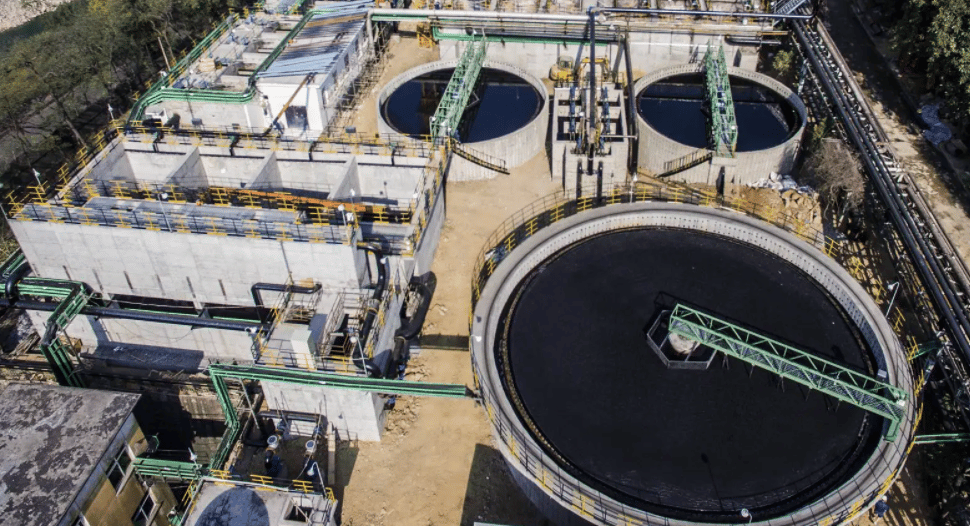Secret Strategies in Industrial Waste Water Treatment Procedures
The therapy of commercial wastewater is an important element of ecological monitoring, entailing a series of methods created to alleviate the influence of contaminants. From the basic physical techniques that divide solids to the advanced chemical and biological processes that target details toxins, each technique plays a crucial role in achieving water top quality criteria. Moreover, innovations in modern technologies such as membrane layer filtration and progressed oxidation procedures supply cutting-edge options for enhancing therapy efficacy. Recognizing how these approaches interconnect and their effects for sustainability raises essential inquiries concerning the future of wastewater monitoring in market.
Physical Therapy Techniques
Just how successfully can physical treatment approaches resolve the intricacies of commercial wastewater? Physical therapy methods play a critical function in the initial stages of wastewater management, concentrating mainly on the elimination of solids and big particulates. Methods such as flotation, filtration, and sedimentation are vital for minimizing the concentration of suspended solids, consequently improving the performance of subsequent therapy processes.
Sedimentation involves the gravitational settling of solids, permitting for the separation of larger materials from the wastewater. This approach is particularly reliable in clarifying water prior to chemical or organic treatments.
In addition, flotation approaches, which use air bubbles to raise suspended solids to the surface area for elimination, are efficient in dealing with wastewater with high concentrations of fats, oils, and oils. Overall, physical treatment approaches serve as an essential initial step in the extensive monitoring of commercial wastewater, guaranteeing that the lots on succeeding treatment stages is decreased and enhancing general therapy efficacy.
Chemical Treatment Strategies
While physical therapy techniques lay the groundwork for reliable wastewater administration, chemical therapy methods are essential for resolving the much more complex pollutants commonly discovered in commercial effluents. These techniques make use of different chemical representatives to precipitate, counteract, or oxidize hazardous substances, making sure a more detailed removal of contaminants.
One common technique is coagulation and flocculation, where chemical coagulants such as light weight aluminum sulfate or ferric chloride are included in advertise the gathering of suspended bits. This procedure enhances solid-liquid splitting up, lowering turbidity and enhancing water top quality. Additionally, neutralization processes are utilized to readjust the pH of wastewater, using acids or bases to reduce the effects of acidic or alkaline streams, specifically.
Oxidation-reduction reactions play a vital duty in degrading organic pollutants and virus. Chemical oxidants like chlorine, hydrogen, or ozone peroxide are used to damage down intricate natural substances, making them less hazardous or a lot more eco-friendly. Progressed oxidation procedures (AOPs) integrate several oxidation methods to boost toxin removal efficiency.
Organic Therapy Procedures
The efficiency of wastewater treatment is dramatically improved by organic treatment processes, which harness the natural metabolic tasks of bacteria to break down raw material and remove pollutants. Industrial Waste Water Treatment. These procedures largely include anaerobic and aerobic digestion, each customized for certain sorts of wastewater
Aerobic treatment processes use oxygen to support microbial development, advertising the break down of natural toxins right into carbon dioxide and water. Typical methods include triggered sludge systems, where aeration containers promote the blending of wastewater with bacteria, and flowing filters, which urge biofilm growth on media surface areas.
Alternatively, anaerobic therapy procedures take place in the absence of oxygen, using anaerobic bacteria to break down raw material, leading to biogas production, an eco-friendly power source. Anaerobic digesters are commonly utilized in industrial settings for this function, successfully lowering the quantity of sludge while creating beneficial biogas.
The choice of a biological therapy technique depends on wastewater features, treatment objectives, and regulatory criteria. The integration of organic processes in wastewater treatment not just improves toxin removal effectiveness but likewise advertises sustainability by reducing chemical use and supporting resource recuperation.
Advanced Oxidation Processes

Typical AOP techniques include Fenton's ozonation, reagent, and photocatalysis. Fenton's reagent, a mix of hydrogen peroxide and ferrous iron, militarizes the formation of hydroxyl radicals, making it efficient for dealing with wastewater having phenolic compounds and other recalcitrant compounds.
AOPs supply several advantages, including minimized sludge manufacturing and the capacity to deal with wastewater with high focus of natural pollutants. The execution of AOPs calls for mindful factor to consider of functional criteria and cost-effectiveness, making certain that these innovative strategies are suitably incorporated right into existing wastewater therapy systems.
Membrane Layer Filtering Technologies

Microfiltration is reliable for removing suspended germs official website and solids, while ultrafiltration targets smaller sized natural particles and infections. Nanofiltration bridges the gap between ultrafiltration and blog here reverse osmosis, successfully eliminating natural substances and divalent ions. Reverse osmosis provides the highest level of purification, used mainly for desalination and eliminating mono-valent ions.
Membrane innovations use many benefits, consisting of reduced energy usage compared to conventional treatment techniques, modular design for scalability, and the potential for water recovery and reuse. Difficulties such as membrane fouling and the need for normal upkeep need to be dealt with to guarantee system efficacy. Overall, membrane purification modern technologies stand for a crucial component of contemporary commercial wastewater treatment techniques, promoting sustainability and source conservation in water management.
Verdict
In conclusion, industrial wastewater therapy employs a diverse selection of techniques, consisting of physical, chemical, organic, and advanced techniques. Proceeded developments in these techniques will even more boost the efficiency and efficiency of wastewater therapy procedures in industrial settings.
The treatment of commercial wastewater is a crucial element of ecological monitoring, involving a range of methods made to mitigate the impact of pollutants.Exactly how properly can physical therapy methods deal with the complexities of industrial wastewater?Advanced oxidation procedures (AOPs) stand for a sophisticated approach in industrial wastewater treatment, designed to efficiently deteriorate natural contaminants that are commonly immune to standard therapy techniques (Industrial Waste Water Treatment).In final thought, commercial wastewater therapy utilizes a varied variety of methods, consisting of physical, chemical, organic, and advanced techniques. Continued developments in these techniques will certainly better boost more tips here the performance and performance of wastewater therapy procedures in industrial settings